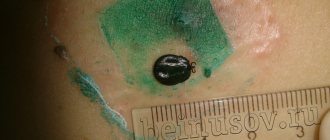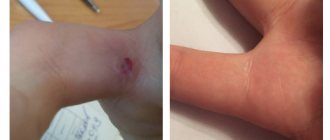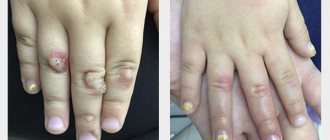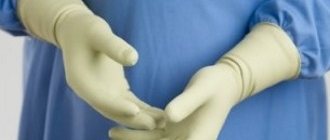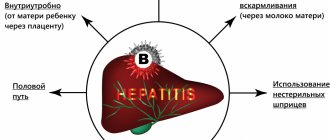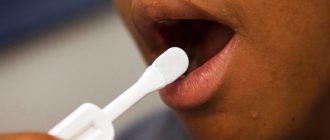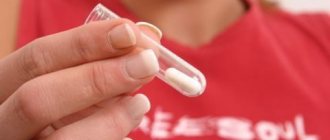Wart - symptoms and treatment
When to see a doctor
Patients with warts often turn to the doctor to eliminate an aesthetic defect.
Some types of warts cause pain when walking or crack, in which case it is better to remove them. There are several ways to treat warts. All of them are usually carried out under the supervision of a doctor, and some of them are carried out only in the clinic’s treatment room.
Chemical treatments
To get rid of warts, applications of milk-salicylic collodion and salicylic patches are used. The percentage of drugs and the method of their use (long-term wearing of patches, applications, etc.) depend on the prevalence and localization of the tumor.
Solutions of zinc and 2-chloropropionic acid can also be used. In this case, a chemical composition is applied to the pre-treated surface, which is left on the wart until the color changes (depending on the type of wart). The procedure is repeated several times after 7, 14 and 21 days. Before each procedure, tissue is removed mechanically.
Another chemical method is a combination of nitric, acetic, oxalic, lactic acids and copper nitrate trihydrate. Only relatively small tumors - up to 5 mm - are treated in this way. The solution is also left until the wart changes color. After 3-5 days, the patient comes for a follow-up appointment; if necessary, he is prescribed a repeat procedure after 1-4 weeks [5].
Cryodestruction
This method involves freezing the wart using liquid nitrogen: a moistened swab is pressed against the damaged skin (covering several mm of surrounding tissue) for 1-5 minutes. The destruction of some tumors requires several procedures with an interval of four weeks.
The main disadvantages of cryodestruction are its pain and delayed effect compared to other methods, in which only one procedure is often sufficient for removal.
Electrocoagulation
Under the influence of electric current, the wart is removed in layers. This operation is performed under local anesthetic [6].
This method is more effective than cryodestruction, but it has a significant disadvantage: electrocoagulation often leaves behind scars at the site of wart removal. For those patients who come to eliminate a cosmetic defect, this method will not be the most suitable.
Laser destruction
Warts are also removed in layers using a laser. The light guide contacts the skin from several seconds to three minutes, depending on the size. Then the resulting scab is excised, and the bottom of the wound is treated with a laser again. The patient is then instructed on how to treat the wound. The operation itself is performed under local anesthesia.
Radio wave surgery
Radio wave surgery is one of the most modern and gentle methods for removing some benign tumors, including warts. For this treatment, the devices Surgitron (USA), PBX oscillator (Russia), Vesalius (Italy), etc. are used.
The method is based on the generation of electromagnetic waves with different frequencies: from 100 kHz to 105 MHz [7]. When the wave passes through the tissue, During the procedure, the tissue resists the passing waves, causing molecular energy to be released in the cells, which heats the skin. When exposed to heat, the cells actually evaporate, creating a neat cut. In this case, no mechanical forces are applied to the affected tissue.
The advantages of this method:
- safety;
- rapid wound healing;
- good cosmetic effect - scars and cicatrices are excluded;
- relative painlessness - a local anesthetic is used before the mini-operation;
- exclusion of secondary infection due to automatic disinfection of the electrode when the device is turned on.
The effectiveness of this method is recognized all over the world, but it is quite difficult to find a clinic that uses the method of radio wave surgery.
Preparations for the treatment of warts
There are no antiviral drugs for the treatment of HPV yet, so it is impossible to get rid of warts with the help of pills. They can only be removed by chemical and physical methods.
Which treatment method to choose
All of the above methods have several disadvantages:
- In the first couple of weeks, the operated area has an unattractive appearance - crusts, darkening of the tissues. This must be taken into account if the warts are on visible parts of the body (for example, on the face).
- Unpleasant odor and some degree of pain during surgery.
In addition, each of these methods has contraindications, which you should learn about at a preliminary consultation with a dermatologist.
But the main disadvantage is the high probability of relapses, especially if the warts were widespread and extensive. With each of these methods, doctors fight not the root cause of the disease, but its consequences, since today the human papillomavirus cannot be cured.
Therefore, therapy is aimed at:
- or to destroy tumors that arise at the site of virus introduction;
- or to stimulate an antiviral immune response;
- or a combination of these approaches [8].
Most often, destructive methods of treatment are used. Their efficiency reaches 50-80% [4].
For surgical treatment methods, childhood is usually not a contraindication. Therefore, many of these methods (including radio wave surgery) are also used to treat warts in children. An exception is the chemical removal of warts due to the possibility of adverse reactions to the substance.
What to do after surgery
After any of these surgeries, be sure to follow your doctor's recommendations.
After removing a tumor using any of the presented methods, the doctor usually prescribes treatment of the removal site. It is forbidden to remove the “crusts” yourself, wet the wound or expose it to direct sunlight.
If a patient constantly develops new warts, then he should consult an immunologist - he may need to take medications that will increase the body's resistance to the human papillomavirus.
Myths and dangerous misconceptions in the treatment of warts
Warts are usually harmless and often disappear on their own over time. This property explains numerous myths about healing using spells and other unconventional methods.
Treatment of warts with home remedies is unacceptable, since the patient will not be able to accurately distinguish a wart from other diseases without the necessary equipment, and complications after such “treatment” occur much more often than recovery.
Only a doctor can select a treatment method after examination and an accurate diagnosis.
Types of warts
HPV is divided into several dozen types. They cause different types of warts:
- Anogenital warts are caused by HPV types 6 and 11. These warts are located around the anus and on the genital mucosa;
- Plantar warts resemble calluses and are caused by HPV types 1–4. They are very painful and often interfere with walking;
- Flat warts appear as flat nodules and are often located on the fingers or on the back of the hand. Most often, such warts form in children and young people, which is why they are also called juvenile warts. They are caused by HPV types 10, 28 and 40;
- vulgar (ordinary) warts are usually located on the hands, but can appear in other places. Such warts are painless and are small lumps with a diameter of 1–4 mm. They can merge into large plaques. Common warts are caused by HPV type 27.
In conclusion, we note that folk remedies for treating warts do not have proven effectiveness, and are sometimes downright dangerous.
To remove skin tumors, it is best to immediately contact a professional. July 1, 2021
Author of the article: dermatologist Mak Vladimir Fedorovich
Preparations for the treatment of small warts
You can remove warts using the following methods:
- cytotoxic;
- chemical;
- physical.
The first two involve treating the skin with special preparations.
With the cytotoxic method, the skin is treated repeatedly.
With chemical treatment, a single treatment is carried out, as a result of which the wart tissue dies and is rejected.
Podophyllotoxin is mainly used for cytotoxic removal.
This is an extract of the roots of Podophyllum thyroid.
Apply it for 3 days in a row.
Then they take a break for 4 days.
If the warts do not disappear, the course is repeated.
There can be no more than five such courses in total.
If there is no effect, other, more effective treatment methods are used.
Possible side effects of using podophyllotoxin:
- redness;
- burning;
- pain;
- ulcers at the site of application;
- edema.
When removing warts on the penis, balanoposthitis may develop.
If an excessively large dose is used or a large area is treated, the components of the drug may be absorbed into the blood.
Then systemic side effects occur:
- nausea;
- dizziness;
- diarrhea;
- increase in body temperature;
- a decrease in the number of blood cells due to suppression of red bone marrow function;
- the appearance of ulcers in the mouth.
Chemical removal methods are also used.
For this purpose, concentrated solutions of alkalis or acids are used.
That is, substances that cause chemical burns of the skin followed by necrosis and tissue rejection.
Such drugs are often used by patients on their own.
Although this possibility is not specified in the instructions.
It states that removal can only be performed by a doctor experienced in performing this type of procedure.
Chemical removal is dangerous if done incorrectly.
It is necessary to treat the skin located nearby with Vaseline or oil.
Otherwise it will also be damaged.
When using a large amount of solution or increasing the exposure time, scar formation may occur.
They are formed as a result of a deep burn of the skin.
When trying to remove small warts on the penis, phimosis may form.
The disadvantages of home removal of formations are as follows:
- Is it dangerous;
- hurt;
- is fraught with side effects;
- not always effective;
- After removal, there remains a high risk of relapse.
Therefore, it is better to remove these formations using physical methods.
HPV and warts
HPV is a whole group of viruses that infect humans. Several dozen strains of HPV can live in the body of one person, but this does not pose any threat to health if you have a strong immune system and do not have serious chronic diseases that weaken it. HPV does not manifest itself in any way until the body’s immune functions decrease to a certain level. If you notice warts on yourself, you should think first not about the aesthetic appearance of your skin, but about your health.
It is worth understanding that HPV is not some rare disease. It occurs in at least half of the world's population, it simply does not manifest itself, and is dangerous only in a number of cases.
Infection with the human papillomavirus occurs during sexual intercourse or kissing, when sharing personal hygiene items - towels, washcloths, nail scissors, etc.
Healing after removal of small warts
After removing small warts, the wounds heal very quickly.
In young people, the healing time usually does not exceed 1 week.
After this time, the crust is torn off.
In its place only a pink spot remains.
Over time, the color of young skin is compared with the surrounding skin.
Scars do not form after removal if it was performed correctly.
There are almost no complications after removal.
They are possible only if a person tore off the scab prematurely, soaked it in water for a long time, or the wound was exposed to contamination.
To reduce the risk of infection, your doctor may prescribe treatment with local antibacterial agents.
Why are traditional methods of treatment dangerous?
Many people remember cauterization with celandine, iodine and vinegar from childhood. Some people removed warts using a silk thread, while others applied hot metal objects to them to burn them out! All these methods are not only ineffective in the fight against warts and HPV, but also dangerous to human health.
As a result of such “home” treatment, a child or adult can receive multiple burns, scars and welts, and removal with a thread only provokes further growth and spread of papillomas on the skin.
We live in the 21st century, where there are modern methods of treatment and correction that are safe for health. If you find papillomas on the skin or mucous membranes, first make an appointment with a dermatovenerologist or gynecologist. The doctor will prescribe treatment and, if necessary, refer you to a surgeon for quick removal of the papilloma.
The MC “Health” network welcomes doctors - gynecologists, dermatovenereologists and surgeons with extensive experience. Hundreds of patients come to appointments with external manifestations of HPV, and our specialists consider each case individually - prescribe the necessary tests and studies, adjust treatment, and help quickly cope with the disease. You can make an appointment with any doctor on the clinic’s website.
Don’t delay the examination and get treatment from professionals!
Methods for removing small warts
Physical methods for removing small warts on the skin have a number of advantages:
- removal is carried out simultaneously;
- the procedure takes a minimum of time;
- it is painless (local anesthesia is used);
- guaranteed effect;
- possibility of histological examination of remote formation;
- low risk of relapse.
Our clinic uses all modern methods for removing warts.
We remove formations of any size.
For a large number of small warts, laser or liquid nitrogen can be used.
Cryodestruction involves freezing skin formations.
When thawed, the cells die.
Warts are rejected, and young skin is formed in their place.
Laser removal is often used.
The laser evaporates the liquid from the cells.
He instantly removes the wart, leaving a scab in its place.
Then a crust forms there.
All procedures are performed under anesthesia: application or infiltration.
The choice depends on the location of the warts and their size.
If there are a large number of small formations, an anesthetic cream is applied to the skin.
After 20 minutes the skin becomes insensitive.
The doctor removes the formations, and the patient does not feel anything at this time.
In the presence of large warts, infiltration anesthesia becomes the more preferable method of pain relief.
Using a thin needle, the anesthetic is injected into the base of the formation.
The anesthetic effect occurs instantly.
After this, the doctor performs removal using any method: laser, electrocoagulation or radio waves are used.
How to get rid of small warts
It is better to get rid of warts earlier.
Don't wait until they reach large sizes.
Moreover, there is no need to wait until the wart becomes the cause of a malignant tumor.
It is better to go to the doctor and remove all formations once and for all.
This will require a total of 1-2 hours of your time.
Removal will be safe and completely painless.
But all warts are guaranteed to disappear.
And with proper medical treatment, the risk of their reappearance will be minimized.
There are several types of treatment that a person with small warts on the body can receive.
He is receiving systemic therapy.
It is aimed at destroying viruses in the body.
A person is prescribed immunomodulators and antiviral drugs.
Treatment is also used to remove the warts themselves.
